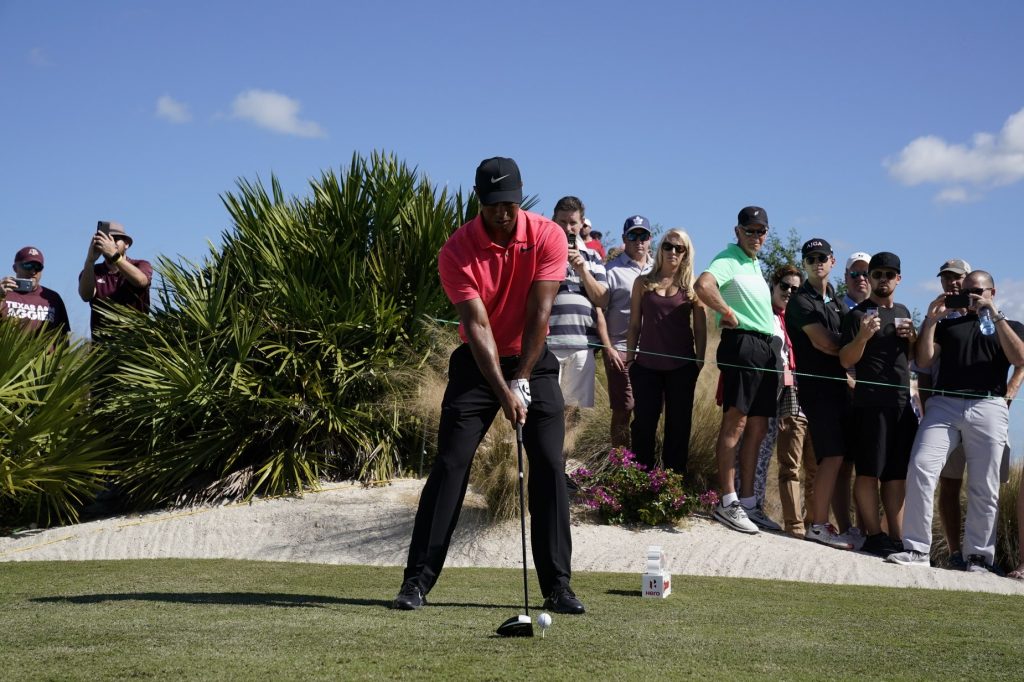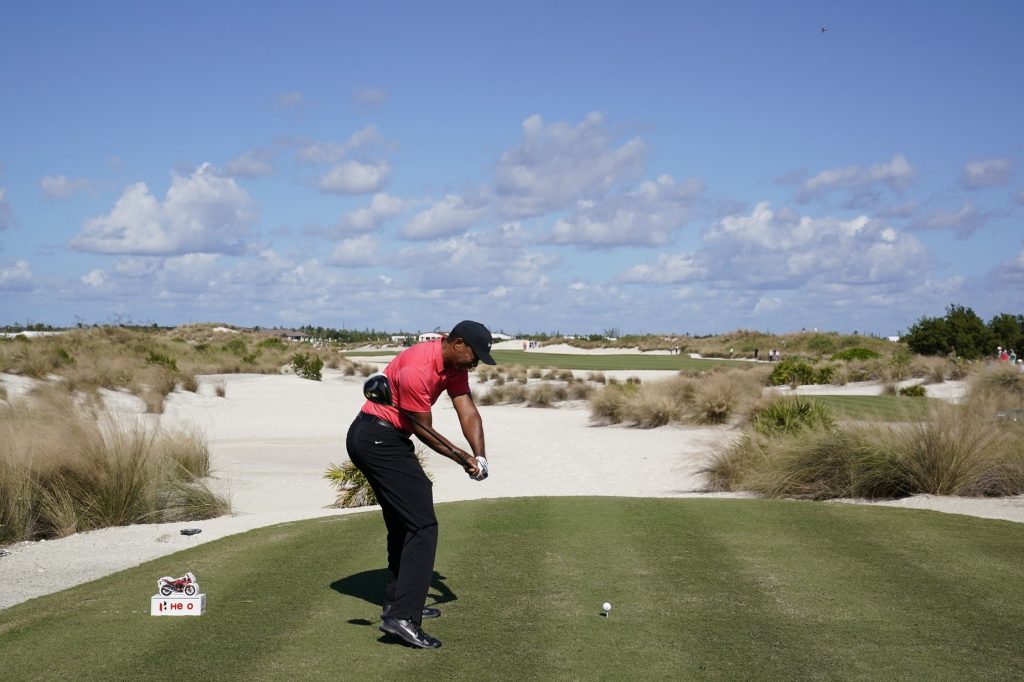Everybody has a take on Tiger Woods’ swing, and how it looks after his comeback from spinal fusion surgery. But there’s nobody in the game who has seen more of Woods’ swings up close than Hank Haney – which gives his analysis formidable weight. Haney taught Tiger from 2004 and 2010, and the stretch from July 2006 to November 2009 produced results that speak for themselves: A win rate of 51 percent, four Majors and six WGC titles.
Here, Haney gives his first detailed analysis of Woods’ post-fusion swing, based on images shot during Woods’ debut at the Hero World Challenge in November. The verdict? “When I saw one of his swings posted in October, I knew from his top of the backswing position that he was going to make a successful comeback – and he was going to win again,” Haney says. “From there, he’s in a much better position to avoid the big misses that have hurt him off the tee. Taking it to a tournament is still a work in progress, but I’m excited to see what he does next. It’s going to be a fascinating year.” — Matthew Rudy
ADDRESS
“The thing that catches my eye is Tiger’s foot position. In the past few years, Tiger had his right foot almost dead straight – which restricted his movement off the ball and his turn in the backswing. He also had his left foot turned out more at address, which might make it easier to turn through but it makes it harder to turn back. For Tiger this is a better stance – right foot turned out slightly and the same with his left foot. The other thing to notice about this picture is that Tiger’s grip is not as strong as it was in recent years with his left hand. This is a very neutral grip position, and one that is much better suited for a great golf swing like Tiger’s.”

TAKEAWAY
“This picture is really a perfect ‘one-piece takeaway,’ where everything is working back together. His club is coming up, and he is naturally letting the club face open slightly.”

TOP OF BACKSWING
“Everyone is talking about the fact that Tiger needs to make sure he is moving off the ball a little in the backswing. I agree that he is much better when he does that slightly. He’s done that here, and he’s definitely maintaining his height better than has been in recent years and that’s a big key for him as well.”

TOP OF BACKSWING
“This is the same position I saw in the post on Twitter in October. His left arm is up higher here than it has been, and his club is pointed parallel to his target. This is where he will have the most success. When Tiger’s left arm gets lower and more inside, he gets the club across the line at the top of the swing, and when the club points to the right of the target at the top of the swing, he will always struggle with a two-way miss. I knew when I saw this backswing that he would be able to avoid the big misses.”

DOWNSWING
“With Tiger, this is the picture that tells a lot of the story on how he will do. Does he maintain his height at least to a level that he has enough room to swing properly? His head has lowered here, but that’s mostly just his head. He’s ducked it a little, but if you just focus on his legs and his upper body, he’s not scrunching down like when he has struggled. The club shaft is right in line with his arm. In this picture, the club is coming slightly from the inside, but the hole calls for a draw. When Tiger struggles, that club shaft is lower at this point. This is big improvement in a lot of areas.”

IMPACT
The thing I look for with Tiger in a picture at this point is how far his eyes are looking behind the ball at impact. In this picture, he is looking about 10 to 12 inches behind the ball – which is appropriate for a driver. When Tiger has struggled with the club coming too far from the inside, his head tilts back more at impact and his eyes have looked up to three feet behind the ball. That position also isn’t good for his back because it creates more of a “reverse C” coming into the ball. Whether this change is because he’s trying to protect his back or because of how he needs to swing because of the fusion, it’s a positive change.

FOLLOW THROUGH
“At this point in the swing, the position is more of a result than a conscious effort, but I like the look. This is reminiscent of when Tiger dominated the US PGA Tour. The right arm and club are extending into virtually a straight line while he is releasing his body through the ball. He’s let his head and eyes move past the ball, and there’s not too much hanging back with his upper body. At the same time, he’s not gotten in front of the ball too early either.”

TOP OF BACKSWING
“This is a great picture of Tiger really having his left arm up at the top of his swing. The shaft is pointed left of the target as it should be because he is short of parallel, and his left wrist is in a great position here. This is where Tiger will play his best. That swing he was using the past two years is hard for him to play with. He’s better with his left arm up, his club pointed left like this and with not cup in his left wrist.”

DOWNSWING
“The club is coming from a great place here to hit a straight shot. One of the hallmarks of Tiger when he was dominating was that he could play all the shots. It’s easier to play them all when you have a point to work off of – and that starting point is a straight ball. I’d like to see him maintain his height just a little better, but I still maintain that some of that head drop is deceiving because he’s just ducking his head. He has stayed up much better than he has in the past few years. Just a little more up would be on my wish list, but there’s no doubt in my mind he can win from here.”




